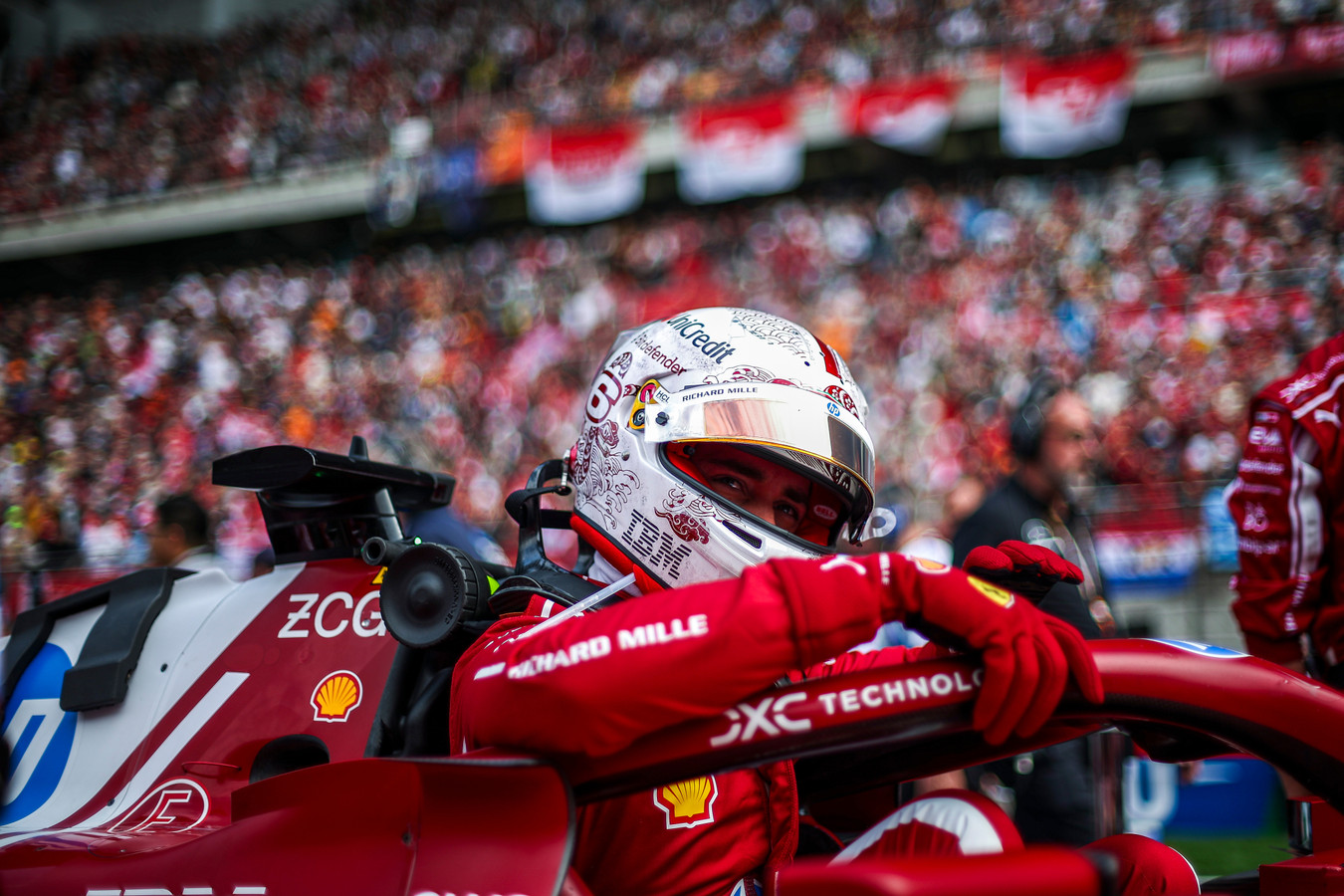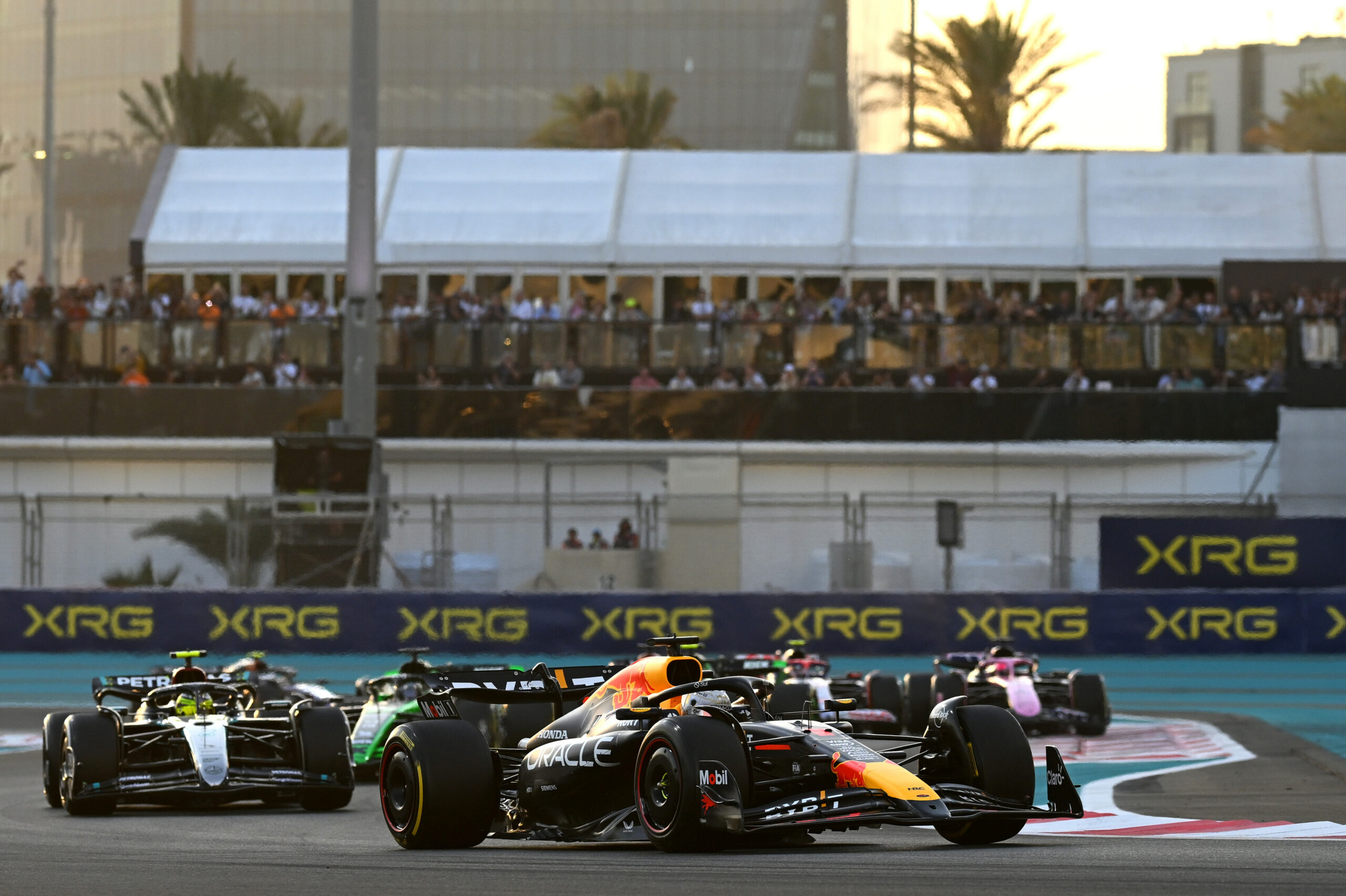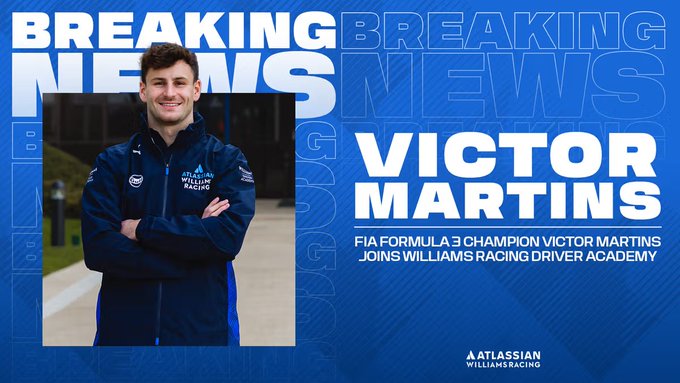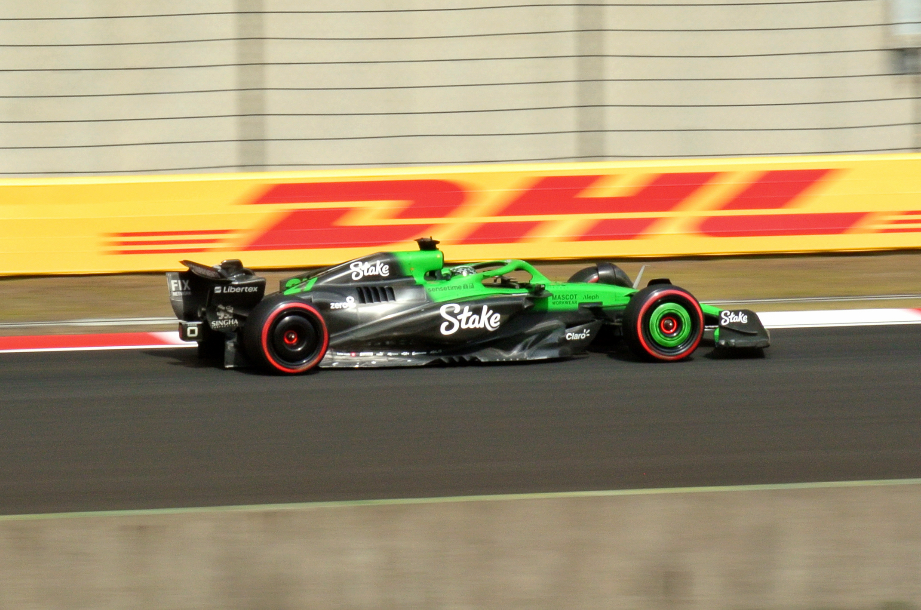By Lenny Sundahl
This is part of a recurring series looking back 20 years at one of the more eventful seasons in recent Formula One history. Amidst the dominant run of Michael Schumacher and Ferrari, 2003 stood out not just as the one season of his five straight titles where Schumacher was seriously challenged all season, but as a marker for several trends that shaped Formula One into what it is today.
The 2002 season saw a level of unprecedented superiority from the Scuderia: not only did Schumacher break the record for most wins in a season, and clinch the title earlier in the season than any previous driver, but as a team Ferrari scored more points than every other team combined. But surely a streak of good fortune like this can only last so long… right?

Photo: Formula1.com
For 2003 the target was on Ferrari’s back. The sport’s powers that be tried to bridge the gap through rules changes designed to promote competitiveness. And teams that had been struggling to keep up had young drivers building momentum, ready to strike. It was the last stand for some contenders, but also the first thrust of greatness for future champions.
Before getting too far ahead of ourselves, a not-too-long look at the grid is needed…
FERRARI: 1 Michael Schumacher, 2 Rubens Barrichello
Practically needing no introduction. After coming to Ferrari fresh off two titles with Benetton in 1994 and 1995, Schumacher remade the Scuderia in his image, bringing over the brain trust from those Benetton teams, and, after a controversial disqualification in 1997 and a broken leg in 1999, took the first of three consecutive, and increasingly dominant, championships in 2000. That season also saw Rubens Barrichello signed as his teammate; finally at a top team after being pegged for greatness for years, the caveat was that he would exist in the shadow of a living legend at the top of his game.
WILLIAMS: 3 Juan Pablo Montoya, 4 Ralf Schumacher
After a string of DNFs in his first season in Formula One, Montoya put together a more consistent run in 2002 to finish third in points, while his teammate, Schumacher’s younger brother, took one of the only two races not won by a Ferrari, at Malaysia. The BMW-powered team were best of the rest, and looked to claw back onto a more even footing with Ferrari and challenge for another championship.
McLAREN: 5 David Coulthard, 6 Kimi Raikkonen
The veteran Scotsman scored the other non-Ferrari win in the previous season, at Monaco, and finished well ahead of his young Finnish teammate in points. It wasn’t that Raikkonen–who came to McLaren after a season at Sauber under a probationary superlicense due to his inexperience–wasn’t fast. Every race he finished, he finished no worse than fourth place. However, he only finished six races out of 17. Like Williams, McLaren had quite recently been the toast of the field, and were eager to prove they still had the butter for it.
RENAULT: 7 Jarno Trulli, 8 Fernando Alonso
In their second year back as full constructors after buying the old Benetton team, Renault moved young and promising Briton Jenson Button aside, instead partnering Jarno Trulli with young and promising Spaniard Fernando Alonso, who created that occasional Formula One miracle of scoring points in the worst car on the grid at Minardi in 2001 before spending 2002 as Renault’s reserve driver, waiting for his opportunity to move to the front. That opportunity had arrived, and he would waste little time with it.
SAUBER: 9 Nick Heidfeld, 10 Heinz-Harald Frentzen
Sauber seemed to always attract two kinds of drivers: young diamond-in-the-rough phenoms, like Heinz-Harald Frentzen in 1994-96, Kimi Raikkonen in 2001, or Felipe Massa in 2002, or down-on-their-luck veterans like Johnny Herbert and Jean Alesi in the late 1990s, or Heinz-Harald Frentzen in 2003; after falling out with Jordan in 2001, Arrows fell apart on him in 2002, and he landed on his feet with the Swiss outfit. He would partner Heidfeld, who had burned up the junior formulae only to seemingly get stuck in the midfield for the past four seasons.
JORDAN: 11 Giancarlo Fisichella, 12 Ralph Firman
Fisichella continued for a second season at Jordan, which had been in a championship battle as recently as 1999 but was steadily sliding backwards. After three years sharing Honda factory engines with BAR, the automaker chose to focus on the latter team, and Jordan were forced to resort to customer Ford engines. It also meant that, instead of young Japanese driver Takuma Sato, the second seat would be taken by older Formula Nippon champion Ralph Firman, who had been toiling in Japan waiting for an opportunity that otherwise seemed to have slipped past him in the mid-1990s.
JAGUAR: 14 Mark Webber, 15 Antonio Pizzonia
Another of the Minardi miracle workers, Mark Webber joined Jaguar to replace the retiring Eddie Irvine at Jaguar, which, now on their fifth team principal in five years, had become a bureaucratic mess after Ford bought and rebranded Jackie and Paul Stewart’s old team. With their only driver to reach the podium now out of the paddock, the impatient corporate parents in Dearborn slashed their budget and gave them a two-year ultimatum to get things done and put the team on the top step.
BAR: 16 Jacques Villeneuve, 17 Jenson Button
What was hoped to become a holy trinity of champion driver, world-class designer, and the seemingly infinite and indestructible backing of a team literally owned by a tobacco company upon founding in 1999, by 2003 were still only making occasional points finishes, and had only reached the podium twice in four seasons. The shape of things to come was being molded, however; the previous season their backers at British American Tobacco deposed original team principal Craig Pollock and contracted team management out to David Richards and Prodrive, and for 2003 they would have the undivided attention of Honda, as well as a new driver in Jenson Button, who, on his third team in four years, was still trying to shake off his early reputation as an enfant terrible.
MINARDI: 18 Justin Wilson, 19 Jos Verstappen
Perpetual backmarkers Minardi were in the rare position of not being the lowest-ranked team on the grid in 2002, on account of A–Arrows folding; B–Toyota, in their first season, still finding their footing; and C–a sterling drive from Mark Webber at his home race in Melbourne to finish fifth, the best placing for a Minardi since 1994. For his efforts he was at Jaguar for 2003, and the team was once again cobbling together what they could with who/what they had. They started the season with Justin Wilson, whose biggest challenge in Formula One was not funding or skill, but being too tall, and journeyman Jos Verstappen, who, while still much shorter than the 6’4″ Wilson, had also lost a potential drive due to being too big for the car (in this case, Sauber), but had plenty of space to work with but not a lot of hope for points.
TOYOTA: 20 Olivier Panis, 21 Cristiano da Matta
The megabudget Toyota team had slim results in their first year, and looked for consistency. The only of their two drivers to score points, Mika Salo, retired, and after a fruitless season in Formula One Allan McNish went back to sports car racing. In their place would be veteran Olivier Panis, who, having once been a race winner in a legendary Monaco fluke, was better known for his technical feedback than his race results at this point, and reigning CART champion Cristiano da Matta, now the fourth CART/Indycar driver to come to Europe after winning. Of the other three, two were race winners–one a world champion–and while da Matta was already older than either Montoya or Villeneuve when he came over, seven wins in 2002 had impressed Toyota enough for them to give him a shot.
These would be the contenders and pretenders for 2003. As tends to be the case in Formula One, most of these would fall in the latter category; some would be so bad at pretending that they would fall off the grid. But others would prove that there was no pretending–this was their moment, and they were ready to make the most of it…




